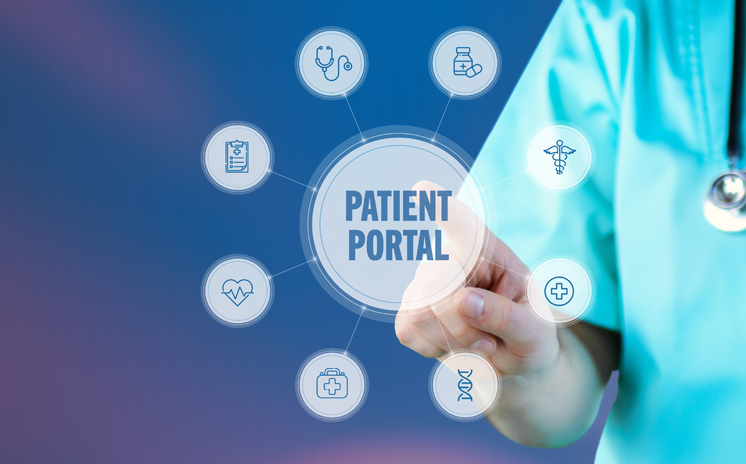Introduction
The patient portal has become an essential tool in modern healthcare, enabling patients to access their health information, communicate with providers, and manage appointments online. This digital solution is improving patient engagement, reducing administrative burdens, and enhancing overall healthcare delivery.
1. What is a Patient Portal?
A patient portal is a secure online platform that allows patients to access their medical records and interact with healthcare providers. Typically offered by hospitals, clinics, and private practices, it connects directly to the provider’s electronic health record (EHR) system.
2. Key Features of a Patient Portal
a. Access to Health Records
Patients can view test results, medical histories, vaccination records, and discharge summaries anytime without visiting the clinic.
b. Appointment Management
Users can book, reschedule, or cancel appointments online, reducing phone calls and wait times.
c. Secure Messaging
Patients can send and receive encrypted messages with their doctors for non emergency inquiries, improving communication and follow up care.
d. Prescription Refills
Requests for prescription renewals can be submitted directly through the portal, streamlining medication management.
e. Billing and Payments
Portals often include online bill payment options, insurance details, and cost transparency features.
f. Educational Resources
Many portals provide articles, videos, and personalized health recommendations to educate patients about their conditions.
3. Benefits of Using a Patient Portal
For Patients
Convenience: Access health information 24/7 from any device.
Better Communication: Direct messaging with providers for quicker responses.
Improved Engagement: Patients stay informed and involved in treatment decisions.
Reduced Errors: Access to updated records minimizes miscommunication.
For Healthcare Providers
Efficiency: Fewer phone calls and paperwork for administrative staff.
Cost Savings: Streamlined appointment scheduling and billing processes.
Enhanced Care Coordination: Real-time access to records for both patients and providers.
Patient Loyalty: Improved satisfaction encourages long-term patient relationships.
4. Security and Privacy
Patient portals comply with strict regulations like HIPAA to ensure data protection. They use encryption and secure login methods (multi factor authentication) to safeguard sensitive medical information.
5. Integration with Telehealth
With the rise of telemedicine, patient portals now serve as a hub for virtual consultations. Patients can schedule video visits, upload documents, and receive care without leaving home.
6. Challenges and Solutions
Common Challenges:
Limited digital literacy among older patients
Login difficulties or forgotten credentials
Concerns over data privacy
Solutions:
Providing tutorials and support for first time users
Simplifying login processes with secure, user friendly authentication
Regularly updating security measures and educating patients about privacy practices
7. Future of Patient Portals
Advancements in artificial intelligence and mobile health apps will make patient portals even more interactive and personalized. Features like predictive analytics, real-time health monitoring, and integration with wearable devices will enhance preventive care and patient experience.
SEO Optimization for “Patient Portal”
Title: Patient Portal: Benefits, Features, and Future of Digital Healthcare Access
Focus Keyword: Patient Portal
Related Keywords: Online patient portal, healthcare portal, medical records portal, patient login portal
Meta Description: “Discover how patient portals are transforming healthcare access with secure medical records, online appointments, and improved doctor-patient communication.”
Content Strategy:
Place the keyword naturally in headings (H1, H2, H3).
Add internal links to related topics (EHR systems, telemedicine).
Include external references to reputable health IT sources.
Conclusion
The patient portal is revolutionizing healthcare by giving patients greater control and access to their health data. It fosters better communication with providers, improves efficiency, and enhances the overall patient experience. As digital healthcare evolves, patient portals will remain at the core of connected, patient-centered care.
